Last year I stumbled across a snippet from a book that mentioned feral populations of previously domesticated animals in different parts of B.C. Feral horses, feral cows, feral goats — and, on Lasqueti Island, a large and persistent population of feral sheep.
After doing a bit of preliminary reporting, I decided the piece I wanted to write would be best served if I went to Lasqueti.
Though I have a driver’s licence, I don’t have a car, and the piece was a bit of a pet project (please excuse the pun). To keep costs down — and because the anxiety I felt about driving for the first time in a couple of years was overwhelming — I decided the best way to travel to Lasqueti would be by bike and ferry.
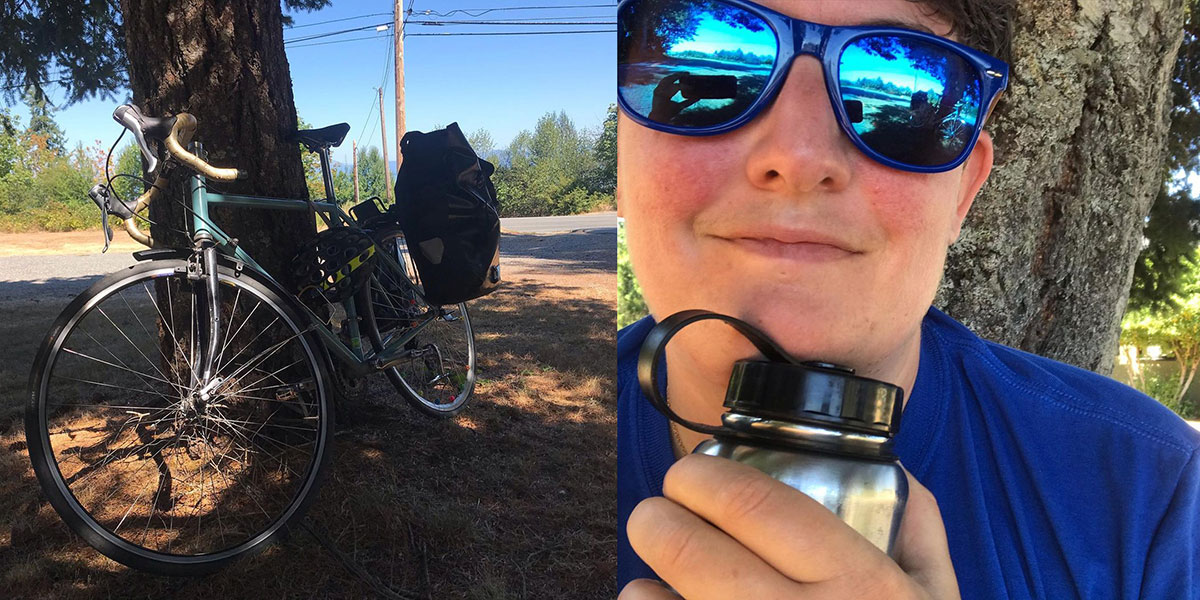
This prompted some conversation on The Tyee’s Slack, an internal communications platform, about our different reporting methods: how we used them, when we used them, and why, though we’re all pretty climate-conscious, reporting by car is sometimes quite necessary. (To be clear, I would never ask a reporter to go on an eight-hour round trip bike ride in order to report it out!)
Four of our reporters — Michelle Gamage, on the climate beat; Christopher Cheung, on urban issues; Jen St. Denis, on housing and civic issues; and Amanda Follett Hosgood, on the North — chatted with me about how they report their stories. The resulting Q&A, edited for length and clarity, doesn’t offer a fully diverse, considered analysis of reporting travel methods, but it does offer a little behind-the-scenes window into Tyee reporting life.
The Tyee: what benefits do you get from different reporting travel methods — car, bike, walking, transit — and what are their various detriments for you?
Jen St. Denis: I get around the city by walking, transit, biking and taking cabs. And I do all of those when I’m out reporting. The benefit I get is that I get a chance to really see and experience the city, especially when I’m on foot or biking. I often get other story ideas when I’m walking around neighbourhoods, and I’m seeing what’s going on. There’s really no substitution for actually physically being in a place, in a location and seeing, you know, maybe a house getting torn down.
I did a few stories on Shaughnessy and how empty it is. It’s a bit of a ghost town. And it’s car-oriented — people in that neighbourhood tend to drive just because they’re higher income. But if you go to that neighbourhood by transit, which puts you in the middle of it, on Granville Street, and you get off and you walk around the streets, it’s a really interesting view of the neighbourhood. It is extremely quiet. It’s got beautiful landscaping, but there are very, very few people. Having a really tactile experience like that, I think, is really important for my reporting.
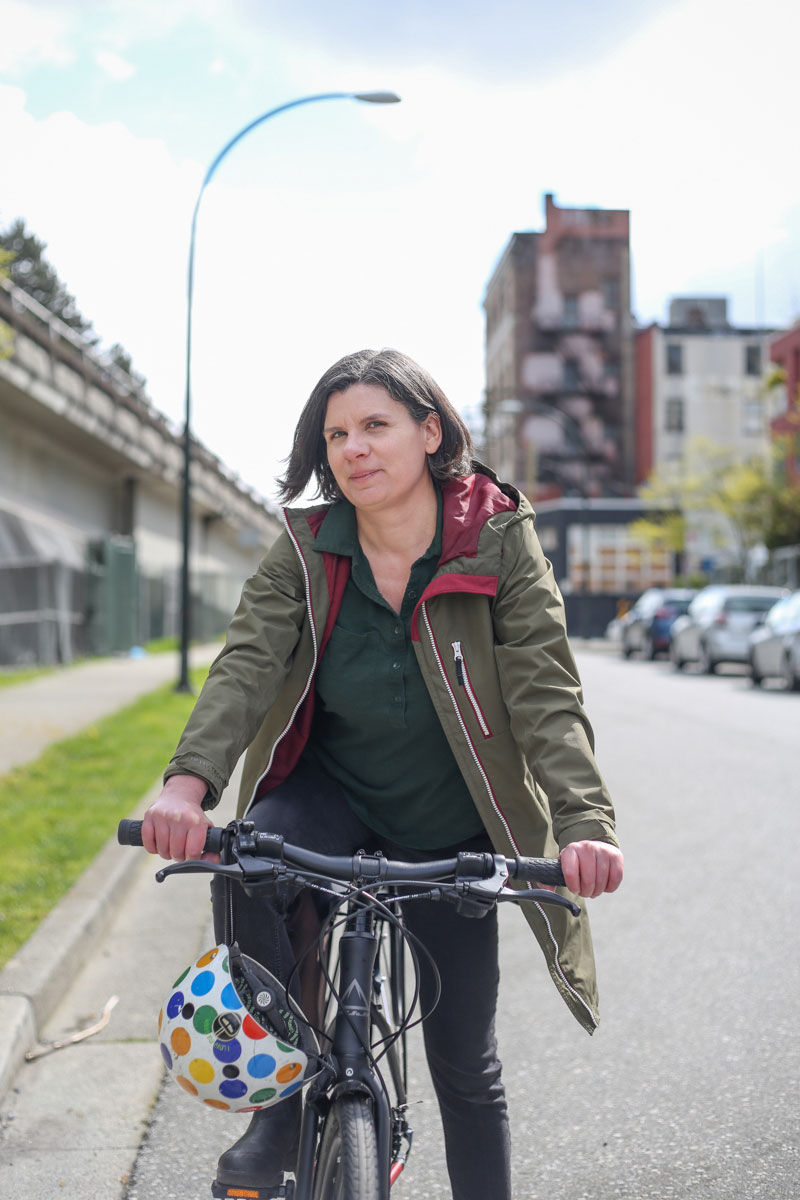
Christopher Cheung: There’s a lot of baggage with each one of those methods. The way I like to think about it is that each landscape has a language of its own. So if you’re in Vancouver and you’re on a main street, you would want to walk that because the produce is out, you can look through clothing racks, there’s the patio life. If you drive, then you’re gonna miss all of that.
And I feel that it goes the same way for the suburbs as well. There are urbanists who say that allowing cars and sprawl to takeover is evil. That’s a planning question, but as a reporter trying to read the landscape, what do you do? If you’re reporting in Richmond or Surrey, you can’t read that landscape without having a car. Architects used to dismiss Las Vegas as an ugly non-city until a famous book on urban design called Learning from Las Vegas tried to teach people how to read it as a landscape, how to experience its language of signs and symbols when you’re driving down the strip. In Richmond and Surrey, you also need a car to notice now the landscape unfolds with malls, plazas, warehouses, big box stores and banquet halls and how locals make life in these places.
But you’ll also see workers by the side of a highway waiting for the bus. Sometimes there isn’t a sidewalk, there isn’t a bench. It’s really brutal. It’s maybe lower-income people who can’t afford to buy in the city and they can’t afford a car, so they’re transiting in.
As a reporter, I would prefer to use whatever is the dominant mode of transportation in a place. But then it’s also important to use the other methods to see where people are falling through the cracks when planners aren’t considering them in their decision-making.
Amanda Follett Hosgood: There was a solid year, year and a half, during the pandemic where I did very little in-person reporting. When I do go report in person, it often means a minimum one-hour drive to reach the community where I’ll be reporting. Just living where we live, because we live about 10 minutes outside of Smithers, we couldn’t manage without a vehicle. Our main vehicle is a Nissan Leaf. We rarely pay for gas and we just try to arrange our schedules so that all our driving is with the EV. But other than family vacations and big snow days, the one time that I really need our truck is when I’m going on a reporting trip into a remote area.
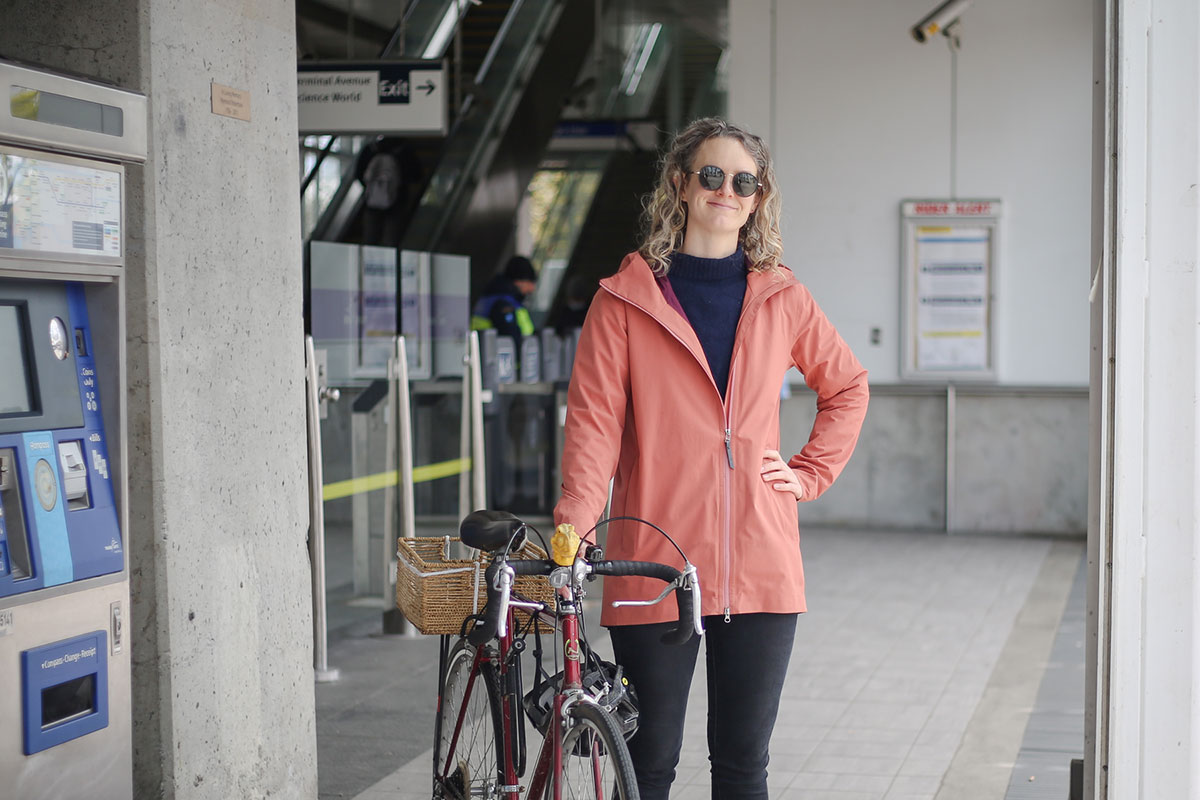
Michelle Gamage: I took a look back at the stories that I’ve written for The Tyee and tallied up the stories where I used transit, where I used a car or where I biked. I didn’t count walking because that’s not really feasible from where I live in Vancouver. Not all stories were just a car or just a bike — they often intersected or overlapped. I drove or used transit for seven stories each and I biked to five. I thought I’d have way more transit, actually. But here we are.
The car probably has the biggest benefit because it lets me reach areas that I wouldn’t easily be able to bike or transit to. That helps me access remote and out-of-the-way places. Detriments are obviously the financial and fossil fuel consumption costs. For walking, transiting and biking, the costs are very low. The cost is probably just making sure that you have a good hearty lunch so that you can bike anywhere you need to go.
It’s often a reporting job requirement to have a licence and a car. Do you think that requirement is a barrier, or do you see the wisdom in it?
MG: I remember when I was interning during journalism school and there was a car crash they wanted me to cover. And I told them I didn’t have a car, I didn’t have a way of getting there. They were very surprised about that. But it was an unpaid internship while I was doing unpaid schoolwork — it was bizarre to think that I could afford to have a car at that time. I’ve never felt that same assumption from The Tyee team. But for myself, I’ve felt a lot more freedom to pitch stories outside of Vancouver because I could get out to them.
AFH: I think this question brings up an interesting discussion about the different styles of reporting The Tyee does and the different communities that we cover. It would be harder to do my job in northern B.C. without being able to easily go and meet up with people in person. I don’t think it should be a requirement, and it’s maybe a matter of how you approach the job, but thinking back to my 20s and 30s, I wanted to keep a certain fitness level just to be able to cover certain things that were happening in my mountain town. I’m in my 40s now, and sometimes I’m like, I don’t know if I can do this stuff anymore. Like when I was trying to get into Unist’ot’en Healing Centre two years ago.
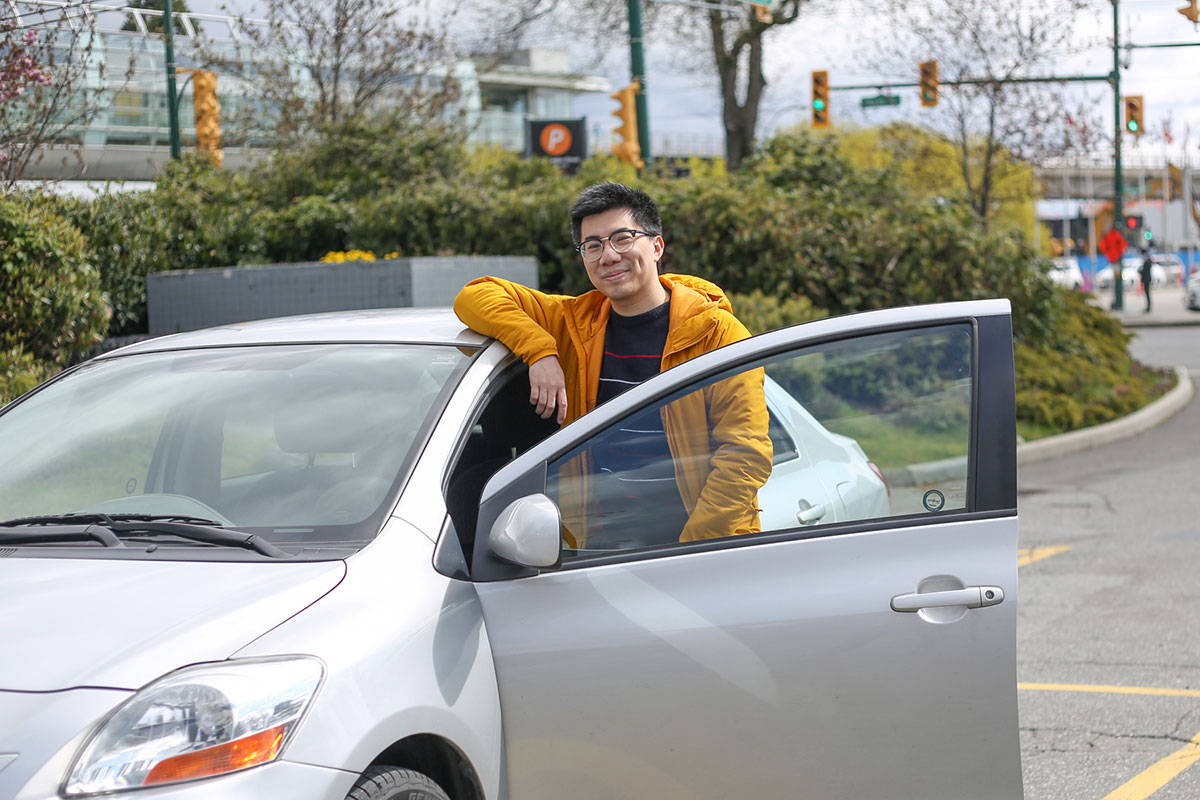
CC: For us in Vancouver, there are a lot of options and they’re pretty equal to one another in terms of getting from point A to point B. Sometimes you’ll get an occasion where it’s just not possible to do anything but by car. My very first editor asked if I could drive, and it wasn’t a requirement. But he said, “OK, well, if you ever need to get to a story, in a pinch, just drive. If you need to pay for parking, bill us. If you need to pay for a parking ticket, because you’re in a rush, that’s fine. We’d rather pay than for you to have to miss that story.” I think it really just depends on where you are or what story you’re doing for that day.
Are there any stories that you’ve written that you were only able to report using one specific travel method?
AFH: In early 2020, when we were shopping for our electric car and managing with one vehicle, that’s when everything was happening out on Wet’suwet’en territory. Jesse Winter flew up here for the blockades and we ended up teaming up to get out to the Morice Road. He’d rented a little Subaru hatchback. We got to the police checkpoint where they stopped and asked us for media credentials and gave us the talk about it being a rough and unplowed road. And we were like, “Yeah, we know what we’re doing.” And we got probably 50 metres beyond the plowed road and totally put the Subaru in the ditch.
So we hiked about a kilometre back, found the police and had to put our tail between our legs and ask them to yank us out of the ditch. We went back to the checkpoint, where there’s a camp set up. This was early February, just before the police started arrests. We thought we were going to be stuck outside the area trying to cover it. And then somebody delivering supplies to camp showed up in a big pickup truck. They gave us a ride into Kilometre 39 and we figured it out from there. But yeah, definitely having a four-wheel-drive vehicle is important, if not imperative.
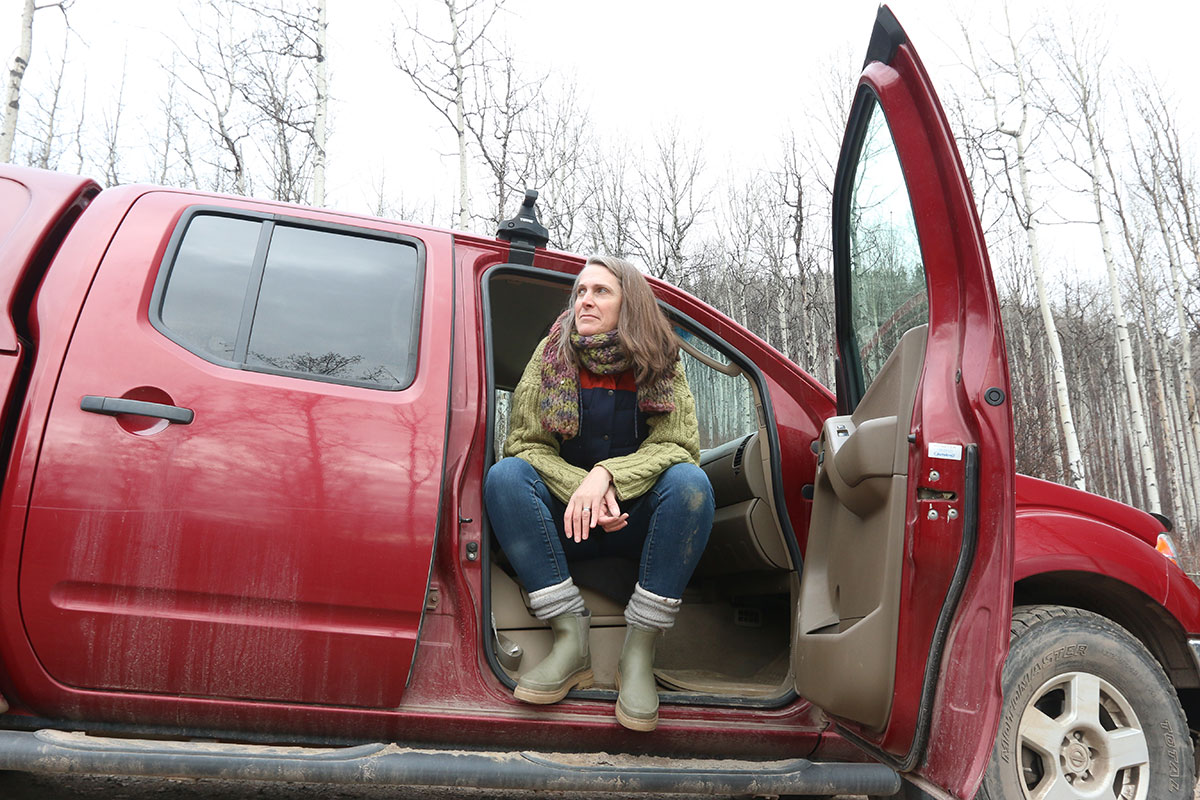
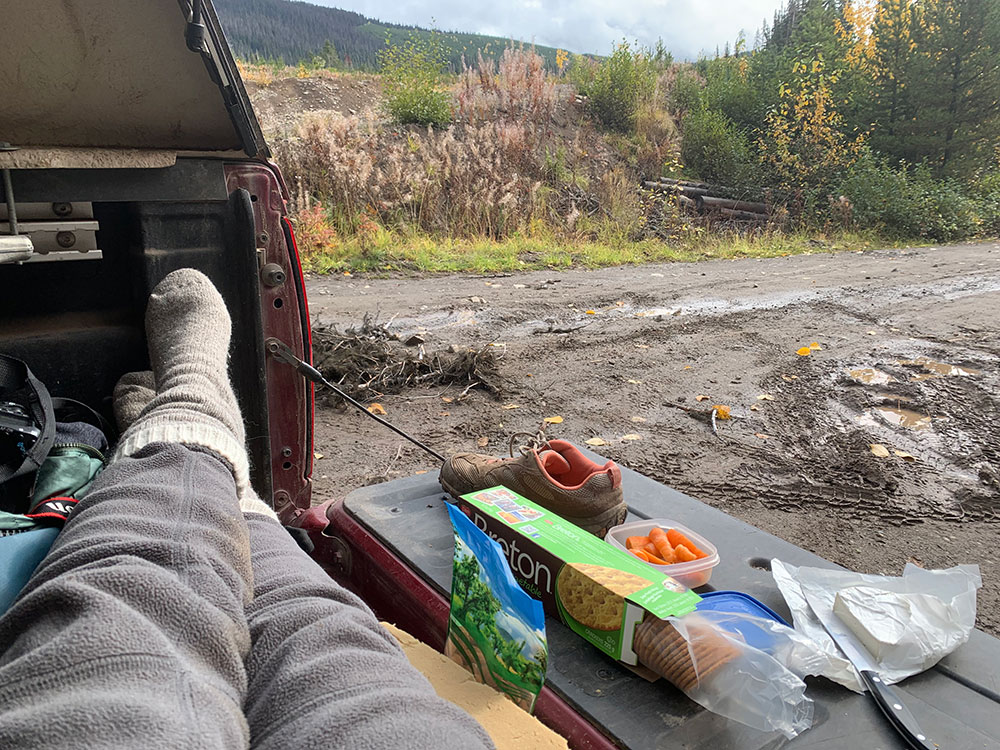
From Kilometer 39, I still needed to get to Unist’ot’en Healing Centre at Kilometre 66. That meant a three- or four-kilometre hike in the middle of the night to Gidimt’en Camp at Kilometre 44. I slept a few hours at 44 and the next day a snowmobile shuttled me from 44 out to the healing centre. In total, it was a 24-hour journey that involved a rental car, truck, hiking and a snowmobile. So that’s kind of uniquely northern.
MG: The wildfire story. I reported that by car. The story on shipbreaking was also reported by car. I think there are buses that run to the Interior, and there’s buses that run to Vancouver Island, and up to the Denman Island area, but that would have added days to the trip. And it would have reduced my mobility while I was actually there and reduced the amount of people I could connect with. So could those stories have been done without a car? Probably, but not without a ton of extra work, and hugely reduced mobility.
JSD: I got to go on a government plane one time to Stewart, B.C., when I was doing business reporting. The government was bringing a bunch of people up and they had a couple of extra seats. They were opening a mining facility. So we got to go up there, and we had a local cab driver who was actually really awesome. He wanted to show us stuff that wasn’t on the itinerary. He wanted to show us all of these abandoned houses, because the town had shrunk. That’s a sort of standard example of a local cab driver leading you to places and showing you their town.
Do you have a preferred way to get around while you’re reporting?
JSD: I prefer to bike as much as possible to get around. It’s annoying sometimes to rely on transit, because transit isn’t always that fast. I like to bike to the Downtown Eastside specifically, because it’s just the fastest way to get there. With biking, you’re noticing things that are happening on the ground, and you’re close to people, but it’s efficient at the same time. I think it’s the happy medium between driving and walking. It’s also a little bit of exercise, so it keeps you happy.
CC: Whatever suits the piece. If it’s really far and inaccessible, you have no choice but to drive. Though I like using them all, because they all will offer a different telling detail about a place.
MG: On a bike, you know the weather and you know what people are wearing. And you note if the mood of the city is kind of grumpy or excited or whatever that day. If you’ve just done an interview, it’s a really great processing time, to be on the bike before you sit back down to write stuff out. ![]()
Read more: Transportation, Media


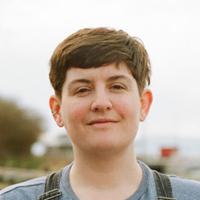

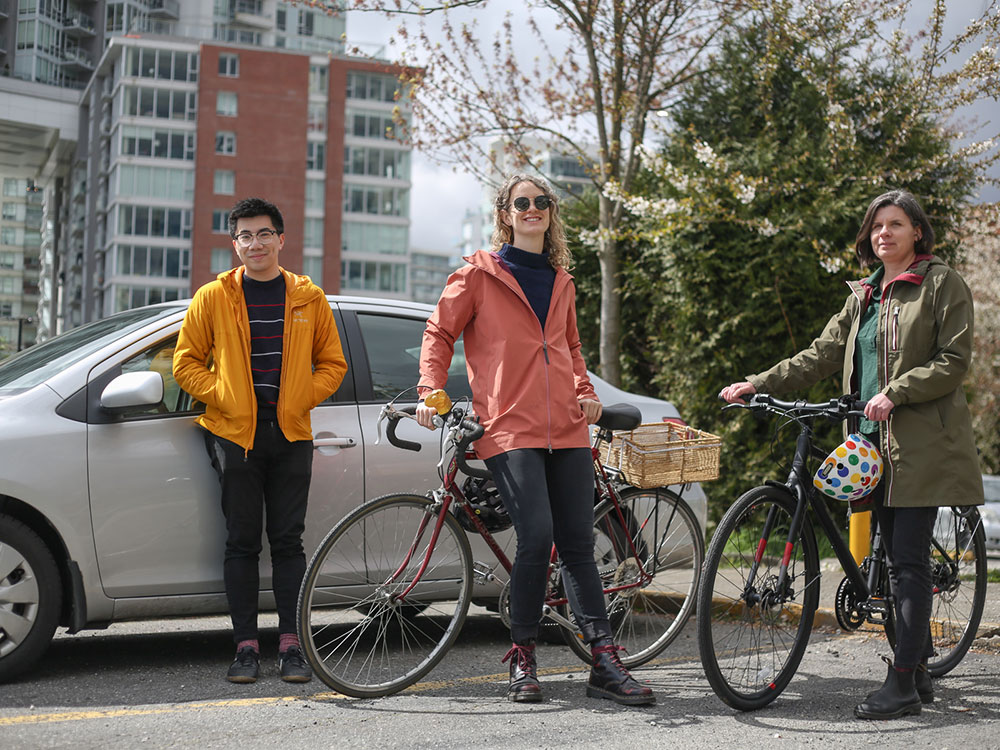












Tyee Commenting Guidelines
Comments that violate guidelines risk being deleted, and violations may result in a temporary or permanent user ban. Maintain the spirit of good conversation to stay in the discussion.
*Please note The Tyee is not a forum for spreading misinformation about COVID-19, denying its existence or minimizing its risk to public health.
Do:
Do not: